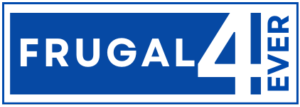In a society where financial freedom is critical, passive income ideas have become a path to economic independence. Imagine earning without a desk, carefully using your time and resources for financial gain. These literary gems from professionals and dreamers reveal the secrets of creating, maintaining, and living in passive income streams. These carefully chosen publications provide time-tested tactics and cutting-edge viewpoints for investors of all levels. Join us as we explore real estate, stock market investments, internet companies, and more to achieve financial freedom. In this article we will explore 11 Best Passive Income Books To Read In 2024.
Top 11 Best Passive Income Books To Read In 2024
1. “The Automatic Millionaire” By David Bach: A Financial Blueprint For Effortless Wealth
David Bach's “The Automatic Millionaire” is a financial gem that teaches readers how to become wealthy automatically. The 2004 book still has solid advice that has changed many people's finances.
Bach emphasizes automation's role in financial decision-making. The importance of “paying yourself first,” automated payments to retirement accounts, savings, and investments, is explained. This strategy makes saving and investing part of one's daily habit with minimum effort and deliberate decision-making.
The “Latte Factor.” is a significant literary topic. Bach shows how tiny, regular savings, like a latte or a few bucks a day, may build wealth over time. This simple but effective approach contradicts the belief that wealth-building involves significant sacrifices and urges readers to make minor, doable adjustments.
With his engaging writing style, Bach makes financial ideas understandable to all income levels. He utilizes real-life examples and case studies to show how people with different financial conditions may use automated tactics to succeed. If you're starting off or well established, “The Automatic Millionaire” gives concrete strategies that may be customized.
The book explores money psychology and the benefits of a financially optimistic mentality. Bach addresses psychological hurdles to financial achievement and offers solutions. Automating financial operations may help people avoid procrastination, impulsive spending, and saving.
The practicality of financial automation distinguishes “The Automatic Millionaire.” Bach doesn't recommend complicated investments or fast cures. By simplifying automated transfers, he supports that tiny, consistent efforts may lead to significant long-term outcomes.
Bach discusses homeownership and wealth-building. He promotes smart homeownership to develop equity and financial security. Automating mortgage payments and using home equity may speed up financial freedom.
In conclusion, “The Automatic Millionaire” is a timeless handbook for those who want to build riches without effort. Through automation and mentality modifications, David Bach offers a financial path to everyone who follows the book's concepts.
What You Will Learn In “The Automatic Millionaire”
- Automating financial choices for easy wealth creation.
- Automatic donations and “paying yourself first.”
- The “Latte Factor”‘s influence on additional savings.
- Practical ways to overcome financial success's psychological limitations.
- Property ownership as a wealth-building strategy.
- Small, persistent acts may have significant effects over time.
- Automation strategies for financial security.
- Mindset changes affect long-term financial well-being.
2.“The Millionaire Fastlane” By Mj Demarco: Unleashing The Roadmap To Unconventional Wealth
MJ DeMarco's “The Millionaire Fastlane” offers a novel approach to wealth building. The 2011 book encourages readers to abandon slow-lane techniques and adopt a mentality that accelerates financial wealth.
DeMarco's concept distinguishes between the slow lane, which entails saving for retirement, and the fast lane, which involves entrepreneurial ventures that produce wealth quickly. People typically choose the slow path to financial independence, but DeMarco says it could be more productive.
The book criticizes the social habit of delaying pleasure and working for decades to retire comfortably. According to DeMarco, entrepreneurs should seize opportunities, take reasonable risks, and be proactive. He introduces the “Fastlane,” highlighting the necessity to generate value and address market challenges to make money.
A crucial element of “The Millionaire Fastlane” is starting and selling enterprises to make money. DeMarco advises readers to stop trading time for money and establish scalable enterprises that create wealth faster.
DeMarco discusses passive income and how it differs from retirement. He promotes passive income opportunities to give people financial independence and time flexibility early in life.
Scalability and leverage are stressed throughout the book's business model examination. DeMarco helps readers evaluate company ideas based on their potential to quickly generate considerable revenue and financial independence.
The straightforward approach to business distinguishes “The Millionaire Fastlane.” DeMarco debunks success myths and promotes hard effort, perseverance, and intelligent thinking. He offers tips on understanding market requirements, producing value, and growing profitable enterprises.
“The Millionaire Fastlane” is about enjoying life on one's terms, not only earning money. DeMarco pushes readers to break away from social norms, disrupt the current quo, and passionately pursue their goals. The book awakens individuals who are weary of the slow lane and ready to take measured risks and concentrated action.
In conclusion, “The Millionaire Fastlane” is a game-changing manifesto that shows how to escape typical wealth-building mediocrity. DeMarco's words inspire readers to work hard for their goals. The book challenges wealth beliefs, making it crucial for anyone seeking unorthodox financial success.
What You Will Learn In “The Millionaire Fastlane”
- Wealth creation's slow and rapid lanes.
- The “Fastlane” attitude and entrepreneurship.
- Criticism of conventional retirement and passive income.
- Why building and selling scalable enterprises accelerates wealth creation.
- Advice on assessing company ideas for revenue and scalability.
- Direct entrepreneurship emphasizes hard labor and persistence.
- Breaking social norms and living alone.
- Taking measured risks and acting quickly to succeed financially.
3. “Rich Dad Poor Dad” By Robert Kiyosaki: A Roadmap To Financial Empowerment
Since 1997, Robert Kiyosaki's “Rich Dad Poor Dad” has taught countless people about finance. Kiyosaki shares timeless wealth-building, money management, and financial independence teachings from two significant parent figures.
The novel centers on Kiyosaki's upbringing by his biological father (“Poor Dad”) and his best friend's father (“Rich Dad”). The book's main lessons come from the conflict between the two influences.
Kiyosaki's “Poor Dad” symbolizes the traditional money attitude of formal schooling, employment stability, and financial risk avoidance. However, “Rich Dad” values financial knowledge, investment, and passive income assets like an entrepreneur.
Financial education is an essential message from “Rich Dad Poor Dad.” According to Kiyosaki, traditional schooling neglects essential money, leaving people dependent on earned income. “Rich Dad” recommends studying investments, assets, and financial techniques to become financially independent.
Assets and liabilities are critical to Kiyosaki's ideas. He stresses the need to acquire income-generating assets that boost finances. Kiyosaki says assets put money in your pocket, but obligations take it out. This viewpoint criticizes the accumulation of wealth and debt.
The book provides readers to think like investors and entrepreneurs instead of workers. According to Kiyosaki, building wealth is about making money work for you. This transition requires going from the “E Quadrant” (Employee) to the “B” (Business Owner) and “I” (Investor).
“Rich Dad Poor Dad” discusses deliberate risk-taking. Success requires taking financial chances and learning from mistakes, according to Kiyosaki. Failure fears frequently prevent people from taking advantage of sound possibilities. “Rich Dad” recommends seeing mistakes as learning opportunities.
Kiyosaki encourages readers to pursue business and investments for financial independence. He advises diversifying income from real estate, equities, and businesses for long-term financial security.
The book ends with a call to action to manage their finances. Kiyosaki emphasizes deliberate financial choices, challenging social conventions, and financial independence.
“Rich Dad Poor Dad” is a handbook on changing one's thinking regarding wealth and achievement. Kiyosaki mentors generations of people seeking financial independence and freedom to live their own lives.
What You Will Learn In “Rich Dad Poor Dad”
- Financial education's role in financial freedom.
- Different attitudes of “Poor Dad” vs. “Rich Dad.”
- Assets and liabilities affect financial status.
- Transitioning from employee to investor/entrepreneur.
- Take prudent chances and learn from mistakes.
- Developing numerous revenue sources for financial security.
- Challenge social norms and expectations.
- Conscious financial choices change lives.
If you want to make more money using Apps the click here = Click here
4. “Passive Income Freedom” By Gundi Gabrielle: A Comprehensive Guide To Financial Independence
Gundi Gabrielle's “Passive Income Freedom” is a goldmine for anyone seeking passive income and freedom from the 9-to-5. Financial independence seekers will find this 2017 valuable book for its practical guidance, inspiring tales, and strategic insights.
Gabrielle, a prolific author and entrepreneur, offers a unique and sympathetic take on passive income. This book's comprehensive approach to passive income sources for beginners and experts makes it distinct.
Passive income achievement requires mental modifications, which the book begins with. Gabrielle helps readers overcome passive investing myths and retrain their thinking for financial success. Readers feel connected to her tone and examples, making passive income accessible and thrilling.
“Passive Income Freedom” goes beyond theoretical passive income to practical ways for diversifying income sources. Gabrielle discusses passive income sources, including internet enterprises, self-publishing, affiliate marketing, etc. She clearly and enthusiastically explains how to build up different revenue streams, highlighting the value of utilizing abilities and interests.
Gabrielle emphasizes empowerment and inspiration. Beyond practical advice, she highlights passive income's lifestyle transformation. The book inspires readers to imagine a life of freedom, choice, and endless possibilities, proving that passive income is about regaining time and power.
“Passive Income Freedom” emphasizes passive investment diversity. Gabrielle discusses building a portfolio of income sources that match one's objectives and hobbies. This gives readers a well-rounded plan that can endure market and economic shifts.
The book ends by emphasizing that passive income is about empowerment and profit. Gabrielle's practical counsel, inspiring stories, and strategic recommendations help readers change their financial destiny. “Passive Income Freedom” goes beyond financial guidance for stay-at-home parents, prospective entrepreneurs, and income diversifiers.
What You Will Learn In “Passive Income Freedom”
- Passive income success requires mindset changes.
- Actionable income diversification techniques.
- How-to guides for internet enterprises, self-publishing, and affiliate marketing.
- Passive income transforms lifestyle and freedom.
- Focus on earning from talents and hobbies.
- Passive investment diversification insights.
- Creating an income portfolio that matches your objectives and interests.
- Passive income's ability to free up time and control.
5. “The Real Estate Game” By William Poorvu: Mastering The Dynamics Of Real Estate Investment
William Poorvu's “The Real Estate Game” shows the dynamic world of real estate investing. The.”999 book remains a staple for new real estate investors and seasoned cash flow investors striving to improve.
A profound grasp of real estate investing techniques, obstacles, and possibilities drives Poorvu's story. Poorvu covers property value, market analysis, and risk assessment using his considerable real estate investor and educational expertise.
Poorvu's focus on long-term real estate investing is a book highlight. Poorvu promotes methodical decision-making in a short-sighted world. He distinguishes “The Real Estate Game” from works focusing on immediate returns by arguing that sensible decisions lead to sustained passive income streams over time.
Poorvu emphasizes practical guidance. Real-life case examples illustrate theoretical themes in the book. Poorvu guides readers through live life examples to explain real estate agreements, tenant behavior, and sector differences. This practical aspect makes the book valuable by connecting theory and practice.
“The Real Estate Game” teaches market comprehension and financial transactions. Poorvu advises readers to understand market trends, tenant behavior, and real estate cycles. This comprehensive view helps investors make smart choices that generate reliable passive income.
Risk is another theme in Poorvu's story. Real estate is risky, and Poorvu acknowledges this. Instead, he teaches risk assessment and management. Investors may approach real estate with confidence beyond speculation by knowing risk variables and establishing a risk-mitigation plan.
Finally, “The Real Estate Game” is a thorough handbook beyond real estate literature. William Poorvu's decades-of-experienced insight provides a timeless roadmap for real estate investors.
What You Will Learn In “The Real Estate Game”
- Real estate investing requires long-term thinking.
- Tips on property value, market analysis, and risk assessment.
- Real-life examples of real estate transactions.
- Tenant psychology and real estate industry differences.
- Understanding market cycles is crucial.
- Decision-making strategies for passive income stability.
- How to evaluate and manage real estate investment risk.
- Comprehensive real estate analysis beyond financial transactions.
6. “The 4-hour Workweek” By Timothy Ferriss: A Blueprint For Designing Your Ideal Life
The contemporary manifesto “The 4-Hour Workweek” by Timothy Ferriss questions employment, retirement, and the 9-to-5. This pioneering 2007 book has inspired many to break away from traditional professional pathways and create a life of freedom and plenty.
Ferriss proposes “lifestyle design,” promoting outsourcing, automation, and passive income to create an ideal existence. The book's concrete solutions, real-world examples, and uncommon insights inspire readers to reconsider work and life.
Working smarter, not harder, is a significant topic. Ferriss describes his experiences developing low-time, high-return enterprises. He discourages readers from measuring success by hours spent and urges them to concentrate on efficiency and effectiveness.
The book explores the “New Rich” lifestyle, which values time and experiences above material goods. Ferriss gives readers practical strategies to work remotely and follow their hobbies without a set place or timetable.
Definition, Elimination, Automation, and Liberation (DEAL) form the book's foundation. Ferriss helps readers set objectives, eliminate non-essential work, automate procedures, and escape conventional employment.
Ferriss challenges readers to rethink work and retirement standards and work fewer hours. He believes life should be enjoyed continuously rather than put off till retirement.
The book also discusses “mini-retirements”—longer pauses throughout life than typical retirement. Ferriss shows that a whole life doesn't have to wait till later by sharing his experiences traveling and pursuing varied hobbies.
“The 4-Hour Workweek” is about regaining time for what counts, not just money. Ferriss stresses the necessity of living one's principles, interests, and goals. The book helps readers escape standard work with practical guidance and creative thinking.
In conclusion, “The 4-Hour Workweek” is a revolutionary handbook that allows people to create a life of freedom and satisfaction. Ferriss's practical advice, real-world experiences, and unusual insight have made this book a timeless resource for people seeking job freedom.
What You Will Learn In “The 4-hour Workweek”
- Creating an ideal existence via “lifestyle design.”
- Methods for working more innovatively and more efficiently.
- The “New Rich” values time and experiences above goods.
- The DEAL framework: Definition, elimination, automation, liberation.
- Changing job, retirement, and delayed gratification standards.
- Enjoying lifelong mini-retirements and getaways.
- Practical approaches to remote work and geographic freedom.
- Reclaiming time for interests, ideals, and fulfillment.
7. “Stock Market Cash Flow” By Andy Tanner: Mastering Passive Income Through Strategic Trading
Andy Tanner's “Stock Market Cash Flow” guides readers through the complex world of stock market trading and creating passive income. Tanner's 2012 book offers a fresh take on using options trading for cash flow independent of market direction.
Tanner's “Stock Market Cash Flow” emphasizes education and risk management. Tanner recommends knowing choices rather than market speculating. He shows readers how to sell covered calls and cash-secured puts to make money.
Tanner's simple language simplifies trading principles for newbies and expert investors. He provides a blueprint for passive stock market income with accessible examples and practical ideas. The book goes beyond mechanics to include trading philosophy and risk minimization.
Risk management is an essential learning from “Stock Market Cash Flow.” Tanner explains how to avoid the hazards of options trading. He helps readers to make educated judgments and prevent frequent blunders that might reduce earnings by explaining the market.
The book promotes strategic trading and views the stock market as a mechanism for cash flow rather than speculation. Tanner's advice on selling covered calls and cash-secured puts fits the book's focus on passive income.
Tanner emphasizes discipline and calculation in trading's emotional components. “Stock Market Cash Flow” helps users manage the volatile stock market by encouraging constant learning and flexibility.
Actionable ideas differentiate the book. Tanner includes actions for adopting the methods mentioned, making it useful for hands-on assistance. The book shows how to achieve financial objectives via strategic trading, whether you're a beginner or an experienced trader.
Finally, “Stock Market Cash Flow” by Andy Tanner is a detailed guide to passive income from the stock market. Tanner guides readers through the intricacies of options trading and generates steady income flow via education, risk management, and practical tactics.
What You Will Learn In “Stock Market Cash Flow”
- Use options trading to generate passive income.
- The value of knowledge and comprehending alternatives.
- Sell covered calls and cash-secured puts to make money.
- Risk management in options trading matters.
- A cash-flow-focused trading strategy.
- Trading emotions with discipline.
- Trading strategy implementation advice.
- The stock market requires constant learning and agility.
8.“The Little Book Of Common Sense Investing” By John C. Bogle: A Blueprint For Investment Success
John C. Bogle's “The Little Book of Common Sense Investing” is a classic in investing literature, offering a practical and essential approach to financial markets. The 2007 book distills Bogle's ageless wisdom and strongly argues for index fund investing's basic but efficient wealth generation strategy.
Bogle believes low-cost, extensively diversified index funds are the core of a good investing portfolio. He dispels the idea that financial success requires active trading, complex techniques, and expensive funds. Instead, Bogle believes investors may accomplish their financial objectives by avoiding costs, maximizing long-term returns, and being diligent.
Bogle's non-jargon writing style simplifies complicated financial ideas for a broad audience. He simplifies decades of financial knowledge into a single story, making his theory accessible to all investors. The book is brief to emphasize the investing strategy's simplicity.
The book examines the history of investing, revealing the dangers of aggressive trading and index funds' performance. Bogle uses persuasive facts and statistics to show why index funds beat actively managed funds.
Long-term thinking is a fundamental lesson from “The Little Book of Common Sense Investing.” Bogle advises investors against market timing and frequent trading, highlighting the futility of beating the market. Instead, he advises patience and discipline to let time and compounding work for the investment.
Investment psychology and how emotions affect decision-making are also covered in the book. Bogle warns investors that fear and greed may derail them and advises them to keep the course. Bogle helps investors withstand market volatility by encouraging a consistent commitment to a well-diversified portfolio of low-cost index funds.
“The Little Book of Common Sense Investing” is a manifesto for a paradigm change in the financial business, not just an index fund guide. Bogle promotes careful, low-cost investment over excessive fees, aggressive management, and speculative trading.
Finally, John C. Bogle's book is a call to action for investors to follow sensible, time-tested ideas. “The Little Book of Common Sense Investing” is essential for building an investing foundation.
What You Will Learn In “The Little Book Of Common Sense Investing”
- Index funds' cheap cost and extensive diversification are crucial to investing portfolios.
- Dispelling the misconception that financial success requires aggressive trading and high-cost funds.
- Avoiding market timing and taking a long-term view.
- The importance of discipline and emotions in investing.
- A history of index funds outperforming actively managed funds.
- Building lasting wealth with patience and compounding.
- A push for cautious, low-cost investment for long-term financial success.
9.“Passive Income, Aggressive Retirement” By Rachel Richards: A Roadmap To Financial Independence
In “Passive Income, Aggressive Retirement” by Rachel Richards, readers learn about passive income and how to achieve financial independence and early retirement. In her 2019 book, Richards recounts her path from financial counselor to retiree in her early 20s, offering insights and advice for readers with similar financial ambitions.
Multiple passive income sources are the focus of Richards' book. She demystifies passive income myths and worries about making them accessible to people from all financial backgrounds. Richards disproves the myth that passive income is just for the wealthy, showing that everyone can achieve financial independence with the correct information and mentality.
Its relatability makes “Passive Income, Aggressive Retirement” strong. Readers feel connected to Richards as she recounts her accomplishments and failures. Her approach to financial freedom includes financial tactics and emotional and psychological components. Richards' encouraging story encourages readers to overcome their worries and uncertainties.
The book discusses passive income sources, including real estate, dividend stocks, and online business. Richards teaches how to create financial objectives, understand compounding, and make intelligent investments. Actionable guidance rea, real-world examples, and case studies make the book more accessible.
Richards stresses money thinking and attitude. She urges people to take charge of their finances and make proactive decisions. Richards encourages readers to defy traditional views and take decisive measures steps toward retirement by promoting financial freedom.
Risk management and strategic investing are also covered in the book. Richards advises investors to learn about numerous investing vehicles, evaluate risk tolerance, and diversify their investments. Her practical tools and concepts equip people to make educated financial decisions for their circumstances.
Last, “Passive Income, Aggressive Retirement” gives readers the means to generate passive income and the confidence and mentality to succeed financially. For people who want to retire early and live on their terms, Rachel Richards' clear and entertaining writing style simplifies financial concepts, making this book helpful.
What You Will Learn In “Passive Income, Aggressive Retirement”
- How to generate several passive income sources.
- Passive income myths and anxieties debunked.
- Practical advice on real estate, dividend stocks, and internet businesses.
- Set clear financial objectives and comprehend compounding.
- Practical guidance with examples and case studies.
- The role of money thinking in financial empowerment.
- Assessing risk, investing strategically, and diversifying portfolios.
- A plan for early retirement and financial freedom.
10.“The Power Of Passive Income” By Nightingale-Conant: Illuminating Paths To Financial Freedom
“The Power of Passive Income” by Nightingale-Conant illuminates how to create many revenue streams easily. This book, published by Nightingale-Conant, a leading personal development publisher, has a panel of specialists to explain passive income.
The book's central idea is passive income, the capacity to earn with little effort. Nightingale-Conant comprehensively introduces passive income sources, including conventional investments, web companies, and royalties.
This book emphasizes proactive wealth generation, which sets it distinct. Aside from conventional revenue sources, the book urges readers to learn, adapt, and explore ways to increase income without continual work. This proactive approach is essential for people who want to leave regular active work and live a life of financial independence.
The book guides readers through passive income sources. Readers learn how real estate investments, royalties, and internet companies work. Real-life examples and case studies show how people have developed passive income streams, inspiring and guiding readers.
The draw of “The Power of Passive Income” is its capacity to reveal options outside regular work. The book helps readers make educated choices and establish a portfolio of income streams that match their hobbies and goals by exploring how to generate money while they sleep.
The book's examples and ideas demonstrate its practicality. Readers should use the book's concepts and approaches and passively receive knowledge. This hands-on approach makes the curriculum more exciting and accessible for a varied population seeking financial freedom.
Strategic wealth-building is also promoted in the book. Passive income is offered as a customizable toolset for people to adjust to their circumstances and aspirations. The focus on customization helps readers find and use opportunities that match their talents, interests, and resources.
The continuously changing world of finance and technology keeps “The Power of Passive Income” current by covering new passive income methods. Online projects and royalties mirror the digital world, giving readers access to new options.
Overall, “The Power of Passive Income” is a complete financial handbook that goes beyond conventional wisdom. By offering a variety of income-generating alternatives, the book helps readers unlock the potential of passive income. Nightingale-Conant's collaboration teaches and empowers people to manage their finances.
What You Will Learn In “The Power Of Passive Income”
- The transforming power of passive income for financial independence.
- Multiple passive income sources, from investments to internet companies.
- The value of proactive wealth generation.
- Case studies of passive income success.
- Build and customize passive income streams using practical methods.
- Digital era passive income importance.
- A focus on intelligent wealth-building and financial empowerment.
11. Affiliate Marketing: Launch A Six-figure Business By Noah Gray And Michael Fox
Noah Gray and Michael Fox's “Affiliate Marketing: Launch a Six-Figure Business” is an excellent reference for affiliate marketers. This book, published in [insert year], teaches affiliate marketing by doing.
The writers simplify affiliate marketing for novices and educate more experienced marketers. Gray and Fox explain how to choose successful categories, construct effective affiliate websites, and maximize marketing effectiveness.
Its usefulness distinguishes this work. Gray and Fox give practical advice supported by case studies and anecdotes. Readers learn how to choose affiliate programs, understand revenue systems, and write engaging content for target audiences.
The book emphasizes relationships. Affiliate marketing requires sincerity, and Gray and Fox advise readers to connect with their audience. Affiliate marketers may build profitable connections by providing value and building trust.
The emphasis on various affiliate marketing revenue sources makes “Affiliate Marketing” valuable. Gray and Fox use typical affiliate programs, high-ticket affiliate marketing, and many channels. This thorough approach gives readers a complete picture of the field's potential.
Gray and Fox also discuss affiliate marketing technicalities, including website conversion optimization, statistics for decision-making, and industry trends. This technical complexity distinguishes the book as a resource for novices and advanced affiliate marketers.
The book tackles affiliate marketing difficulties, including self-doubt, time management, motivation, and tactics. Gray and Fox help readers develop the mentality and resilience needed to succeed in the harsh affiliate marketing industry by admitting these problems and giving practical answers.
Finally, “Affiliate Marketing: Launch a Six-Figure Business” is more than a how-to handbook. The combination of practical counsel, case studies, and real-world examples in Gray and Fox's resource conveys knowledge and confidence. This book shows beginners and experts how to start and grow an affiliate marketing company.
What You Will Learn In “affiliate Marketing”
- Choosing successful niches and affiliate schemes.
- Maximizing affiliate website effect.
- Creating accurate material to connect with audiences.
- Affiliate marketing revenue diversification.
- Technical advice on website optimization and analytics.
- Overcoming affiliate marketing issues.
- Strategies for high-ticket affiliate marketing and multiplatform use.
- Building resilience and a success attitude.
FAQs
What Is Passive Income, And Why Is It Essential?
Passive income is obtained with little effort. it's essential for financial stability since it lets people make money passively.
How Can I Launch Building Passive Income Streams?
Explore investments, real estate, internet companies, and dividend stocks. read books, take classes, and use reliable sources to make judgments.
Are Passive Income Strategies Suitable For Everyone?
Yes, passive income techniques fit different lifestyles and financial objectives. You may match your interests and resources with choices for seasoned or novice investors.
Do I Need A Significant Initial Investment To Generate Passive Income?
Not necessarily. Some passive income sources need substantial initial cash, while many may be established with less. It depends on strategy and personal preferences.
Can Passive Income Replace My Full-time Job?
It is achievable but relies on your financial objectives, passive income sources, and time and work spent creating and maintaining them.
How Long Does It Take To See Results From Passive Income Strategies?
The timeframe depends on strategy and effort. some passive income sources create revenue rapidly, while others take time to establish.
Are There Risks Associated With Passive Income Investments?
Any investment has risks. research, portfolio diversification, and financial adviser consultations are vital to reduce risks.
Can I Generate Passive Income Without Significant Prior Financial Knowledge?
Yes, several sites provide step-by-step instructions and practical assistance for novices. start with instructional resources and learn as you go.
Are There Tax Implications For Passive Income?
Yes, passive income is taxed. Understanding the tax consequences of your passive income sources is vital. Consult a tax specialist for guidance.
Can You Have Multiple Passive Income Streams?
Absolutely. passive income diversification is smart. multiple sources help stabilize and strengthen finances. build a diverse portfolio by exploring options.
Conclusion
These carefully chosen best passive income investing books reveal financial knowledge, leading readers to passive income and financial freedom. In “Rich Dad Poor Dad” and “The 4-Hour Workweek,” each book presents diverse viewpoints on money. Accept the many tactics in “The Power of Passive Income” and “Stock Market Cash Flow,” and explore “The Automatic Millionaire” and “Passive Income Freedom.” As you begin on this transforming path, remember that these tools may help you change your financial destiny. Good luck!










